San Marino has a very developed and well-organized tourism industry, with the "Historic Centre of San Marino and Mount Titano" being listed as a UNESCO World Heritage Site since 2008.
Its capital is the City of San Marino, with about 4,500 inhabitants, but the largest settlement is the city of Dogana in the northeast of the republic.
San Marino is considered the oldest republic in the world, having been founded on September 3 in the year 301, when Marino, a stonecutter from Dalmatia who came to work on the construction of the Rimini port, took refuge on Mount Titano, fleeing persecution for his Christian faith.
Over time, a growing community formed on the mountain, founding the state of San Marino, and the stonecutter became Saint Marino, the story goes... He was helped in his work by his good friend Leo, today Saint Leo.
It is a parliamentary republic with a 14th-century Constitution, led by two captains regent elected for six months who are both heads of state and heads of government. It has one of the highest GDPs, and every resident, even a baby, owns at least one car.
Around 7:30 AM we left from the Hotel Bellevue in Rimini where we were staying, and went to a small Tabaccheria located opposite the train station where we bought tickets; the ticket cost 6 euros per person each way, it is displayed that it sells tickets for San Marino and other locations, but tickets can also be bought from the bus driver, slightly more expensive.
We then went to the Shuttle Bus Station for San Marino near the Hotel Napoleon, about 200 meters from the shop and on the same side as it, past the stations for other buses and at 8:10 AM we set off.
We traveled for about 40 minutes; the bus didn't stop at all stations, just at those where there were passengers, and in the rain, we got off at the Shuttle Bus Terminal Station in Piazzale Marino Calcigni, then we headed towards the elevator and stairs going up to Piazzale Lo Stradone.
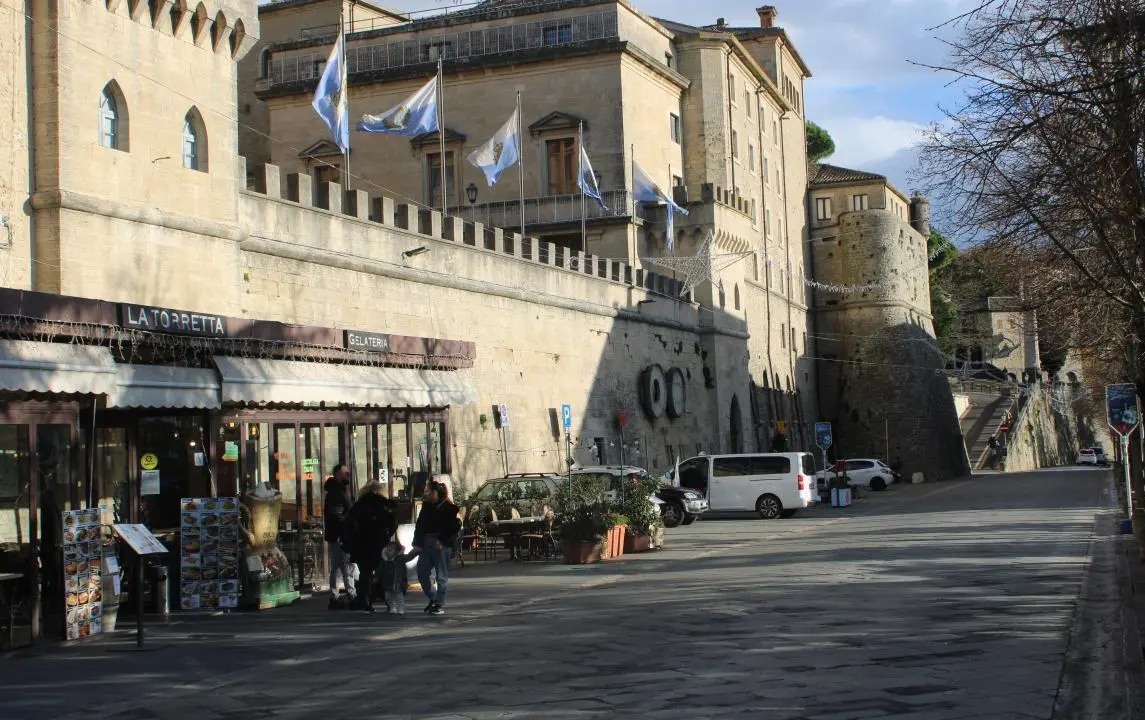
It was raining but lightly, so we took the elevator. To the left, you go towards Porta San Francesco. Most visitors head there; we saw it at the end, we headed right to a viewpoint from where we saw and photographed Chiesa di San Quirino and the Monument to San Francesco, and from there we went to Convento dei Cappucini.
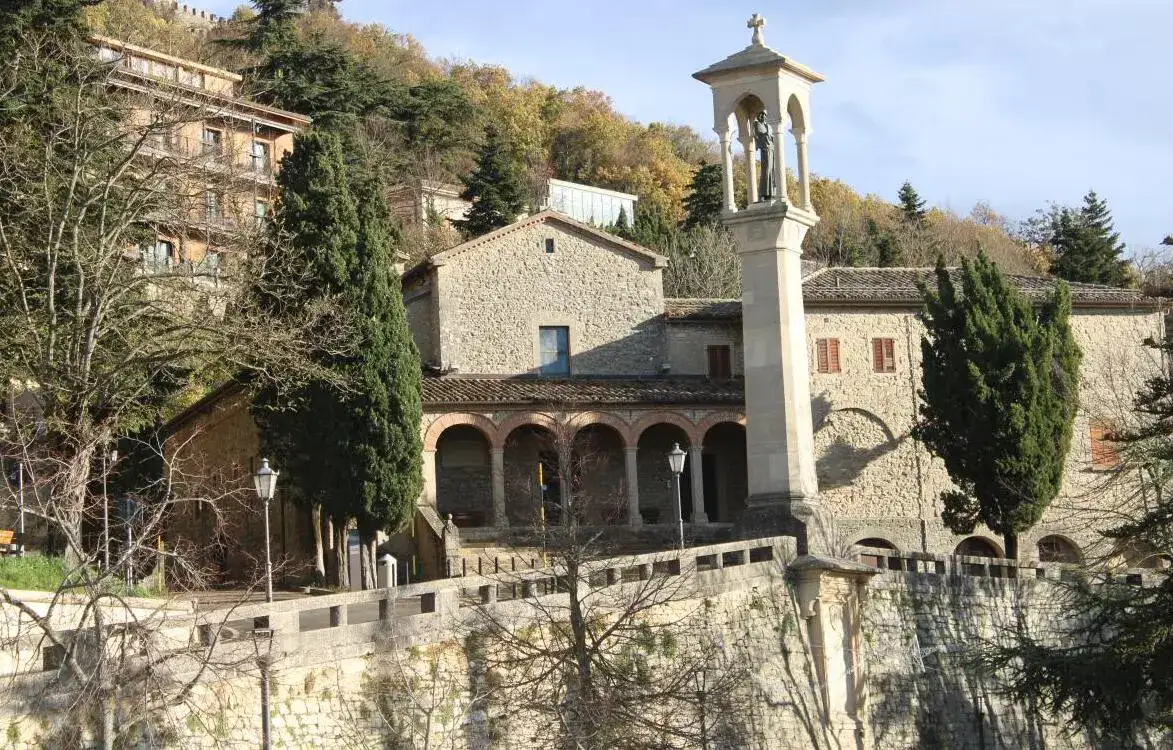
It is a Capuchin Franciscan church built around 1550 on an old chapel dedicated to San Quirino, known also because under its portico Garibaldi disbanded his legion.
On a wide stone staircase, through the Portico with five arches supported by monolithic columns, we entered the Church's Interior, simple, with the "Laying of Christ in the Tomb" by the Italian artist Taddeo Zuccaro in the center and with an amazing capuchin altar made of walnut wood.
We saw, admired, photographed, and left the church; it had stopped raining, but it was still cloudy.
Walking to the left past the church, we climbed some stairs and then went a bit to the left along the alley, although the tendency is to head to the right towards the gate seen in the distance.
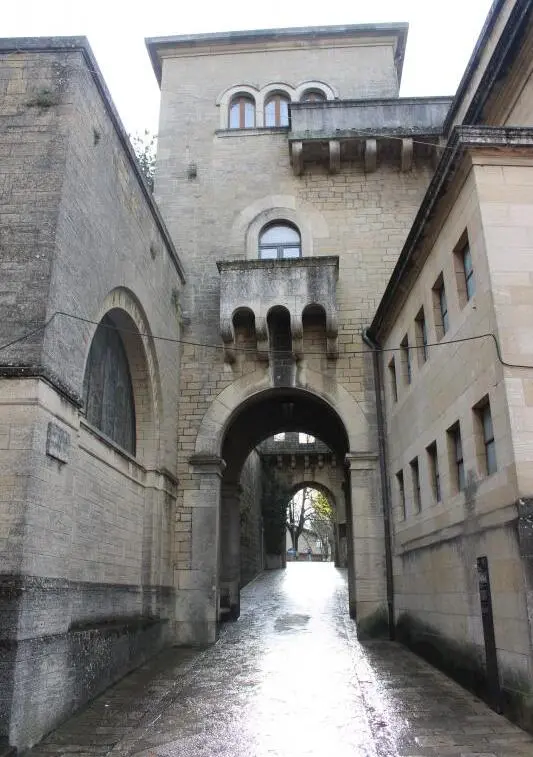
We passed by Portanova and went to Piazzale Sant' Agata. There lies the Monumento Girolamo Gozi, a fighter for the republic's independence, and Teatro Titano, a small Italian-style theatre, a building representative of the 19th-century architecture in San Marino.
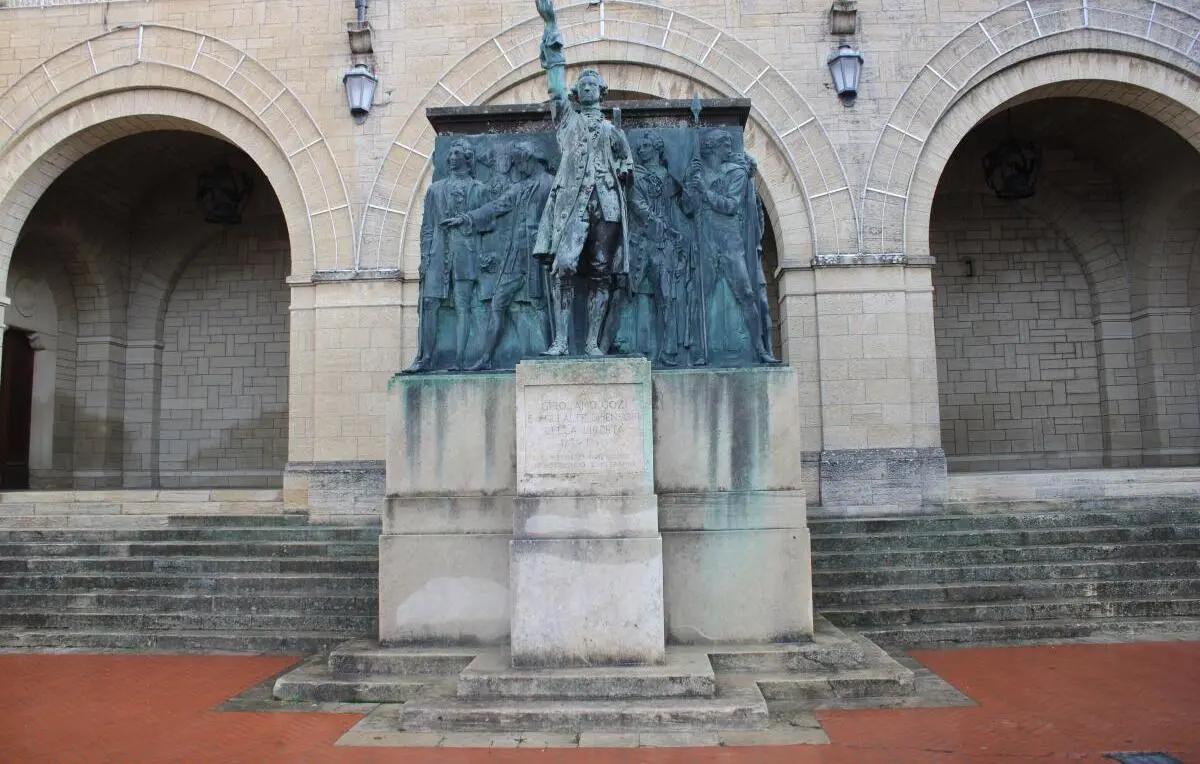
We returned through Portanova and went up to Porta della Murata Nuova, which we had seen earlier, and to the City Walls where we spent some time looking and photographing the narrow, winding, parallel, and close streets.
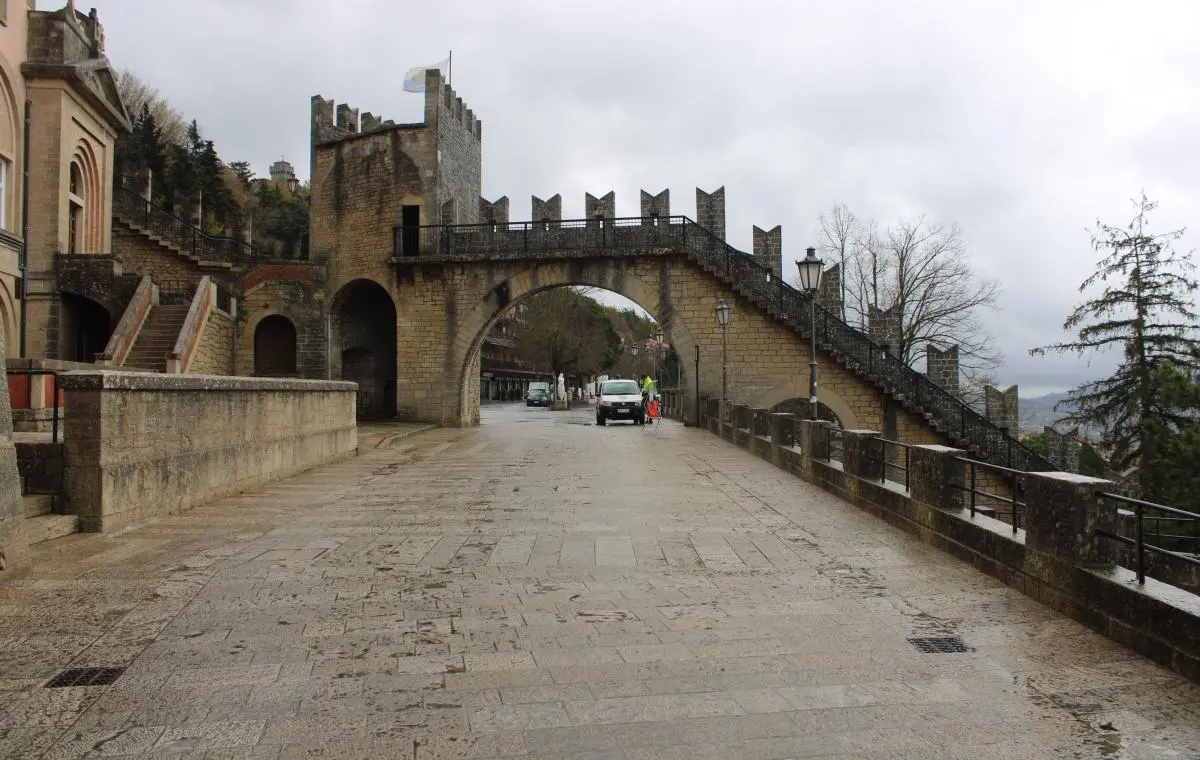
Then we went to Piazzale Garibaldi, to the Monumento Giuseppe Garibaldi, an old marble bust about 140 years old of the well-known general considered one of the "fathers of Italy".
We then descended to Piazza Titano where the Galeria Cassa di Risparmio is located, with temporary exhibitions of works by students from the Design Course of the University of San Marino, as well as a permanent exhibition with a single exhibit, a bas-relief on the left wall of the arch of the Galeria Cassa di Risparmio depicting the Stone Carver who gave the city its name.
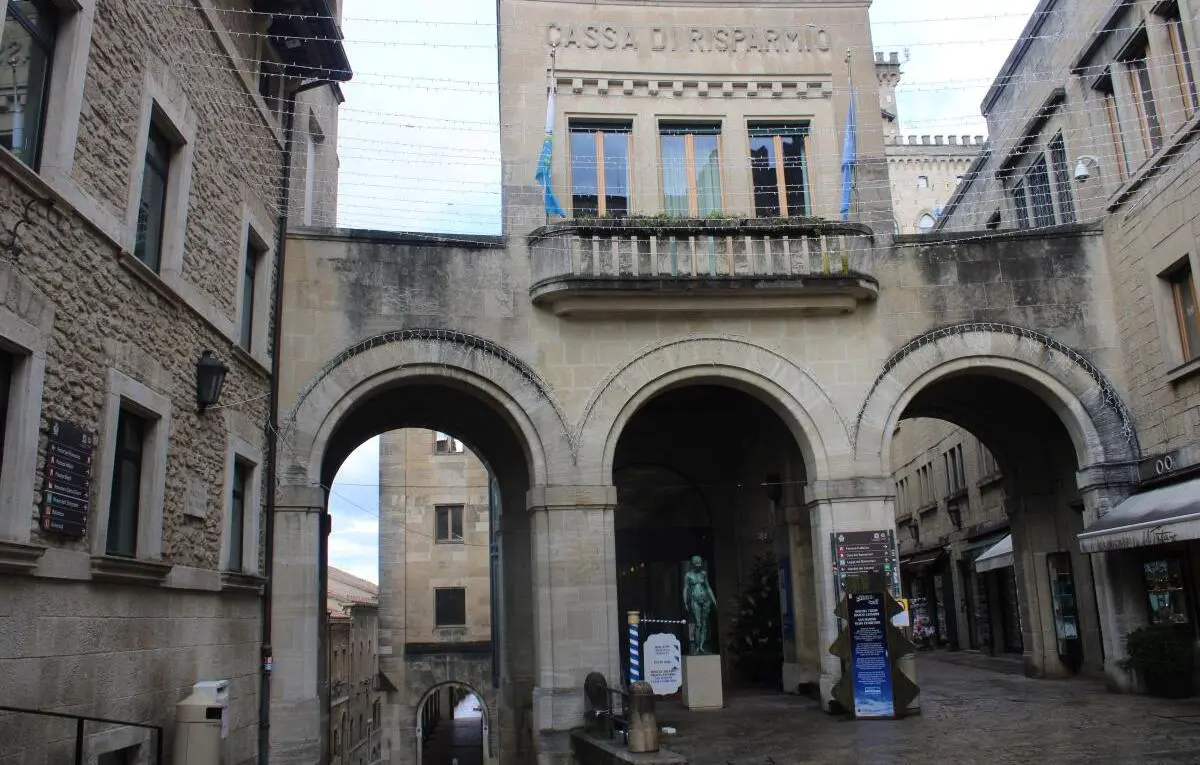
We headed towards the arch on the right of the Gallery and on Via Eugippo we reached the Via Donna Felicissima with a small Garden on the left and Scala Bonetti on the right, down which you can descend to Piazza Sant' Agata.
We had been in the square already and did not go down again, just photographed it from above.
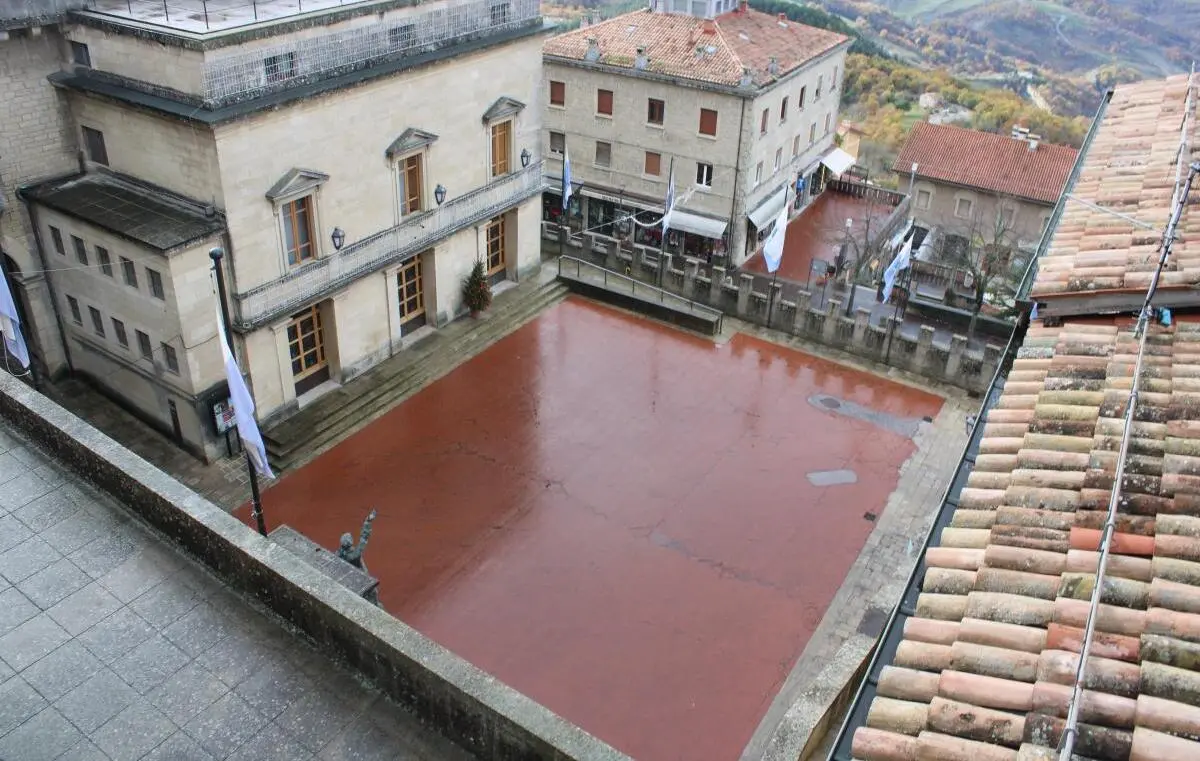
On Contrada del Collegio, past the Museum of the Creatures of the Night - Vampires and Werewolves, we climbed to Piazza della Libertà where we saw the Public Palace of the Republic of San Marino, also known as the Government Palace, built at the end of the 19th century, restored and renovated at the end of the next century, the headquarters of the main institutions and the administration of San Marino, the Captains Regent, the Great and General Council, the State Congress.
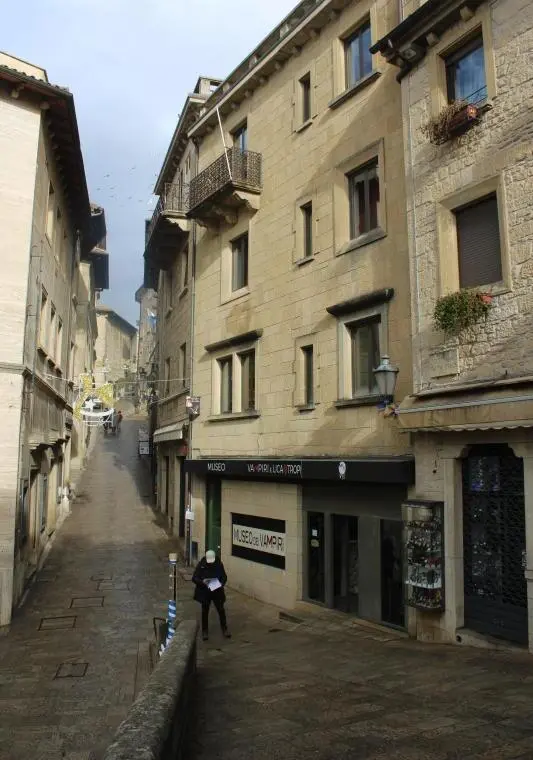
Here is also the Statue of Liberty, Libertas, a carrara marble warrior woman advancing proudly with her right hand stretched forward, holding a flag in her left hand, her head crowned with a three-towered crown, depicting the fortified city of San Marino.
In front of it is a train, which I would have liked to take a ride on, but it was just for decoration.
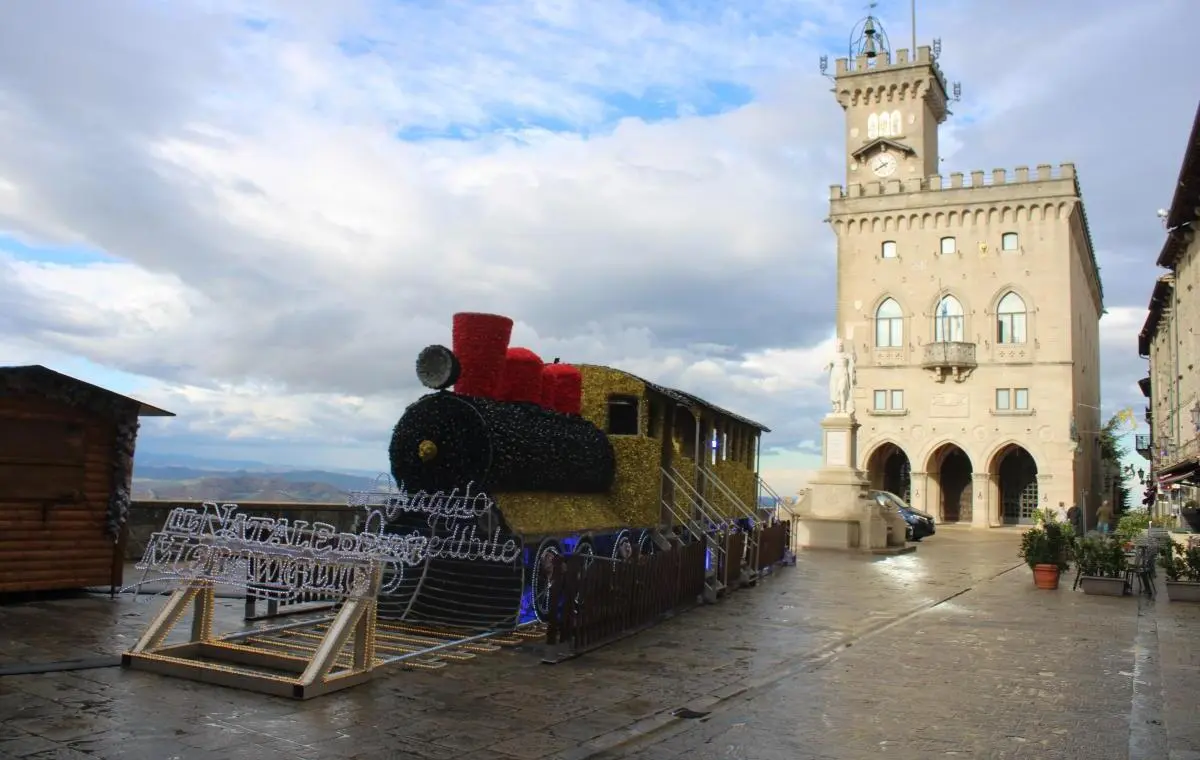
We then went to the monument Bartolomeo Borghesi, a bronze statue erected in the early years of the 20th century to the Italian antiquarian who lived in San Marino in the first half of the 19th century, one of the founders of the science of numismatics.
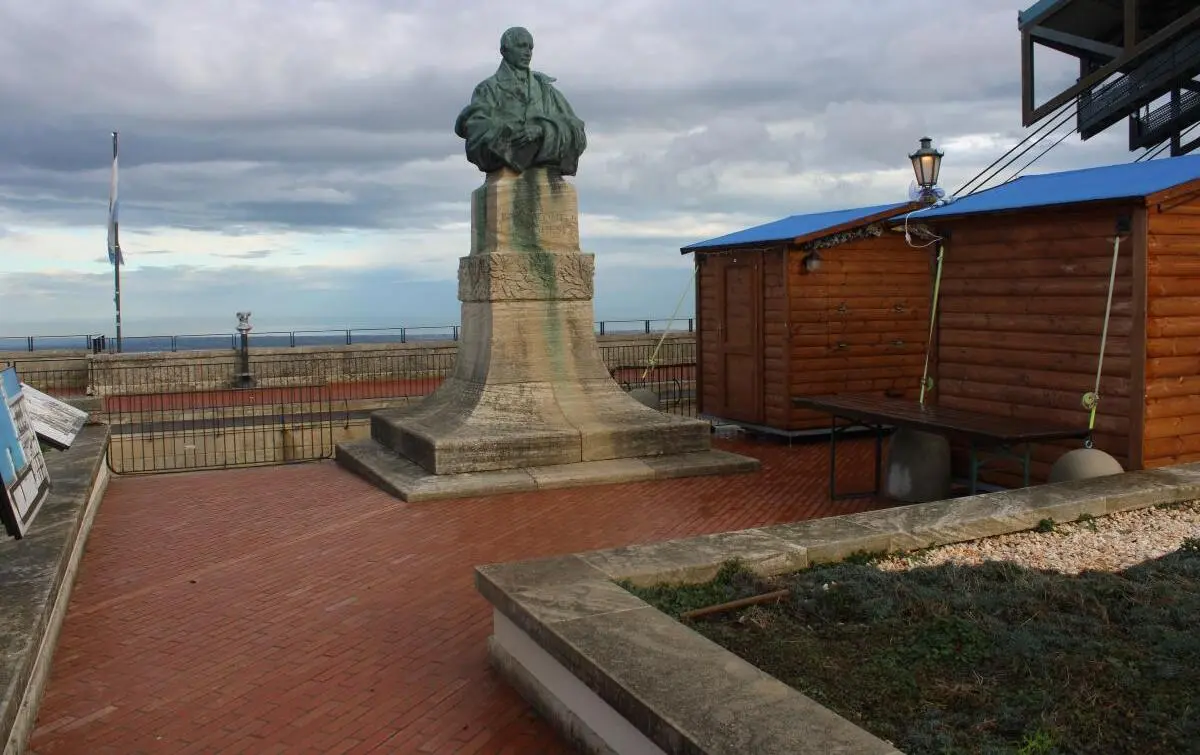
It is located on Via Eugippo 26, in one of the city's best Belvedere Points. We saw and photographed the Cava dei Balestrieri (Crossbowmen's Quarry), a former stone quarry arranged as a Crossbow shooting range, then we descended to the Stazione della Funivia (Cable Car Station) in Contrada del Collegio where we found the Saint Stone Carver again, a statue in a niche on the wall of the Cable Car.
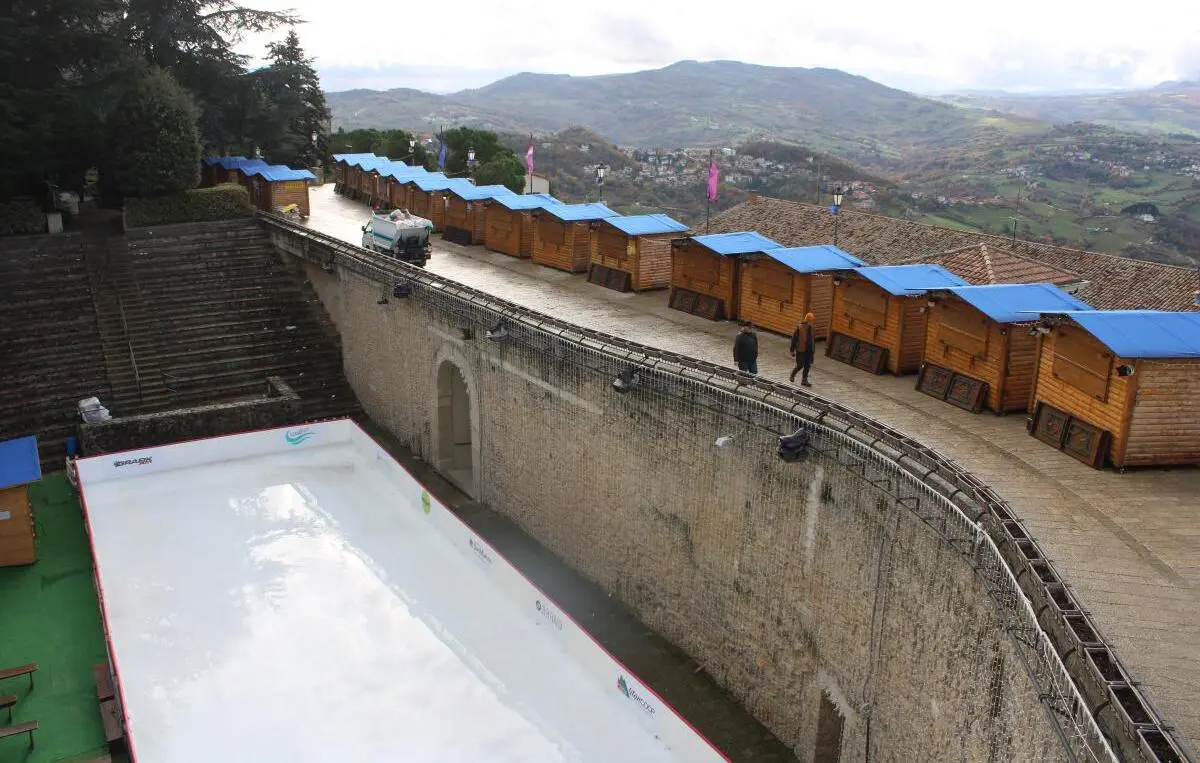
At the Station, you can take the cable car that starts from the Stazione della Funivia in Campo della Fiera, where a bus had stopped and a group of Chinese tourists we later met had gotten off.
We continued our walk past the "Maternity" Statue, a bronze sculpture of a woman holding a baby in her arms, created by Antonio Berti, a 20th-century Italian sculptor and medalist, a monument dedicated to the victims of the bombing on June 26, 1944, and we arrived at Piazzale Domus Plebis at the Basilica del Santo dedicated to Saint Marino, a sacred place where the most important institutional events are celebrated.
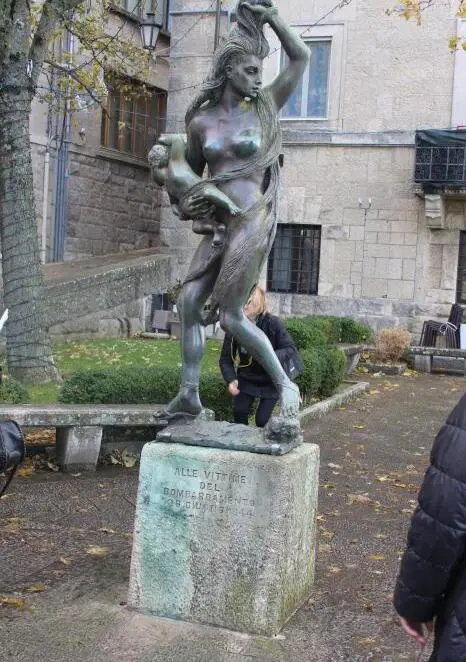
Built in the neoclassical style in the first half of the 19th century, tradition says that it was the site of the first House of the People, hence the name of the square, with a Staircase and a wide Portico with eight Corinthian columns and the interior with three Naves separated by Corinthian columns leading to a semicircular Apse.
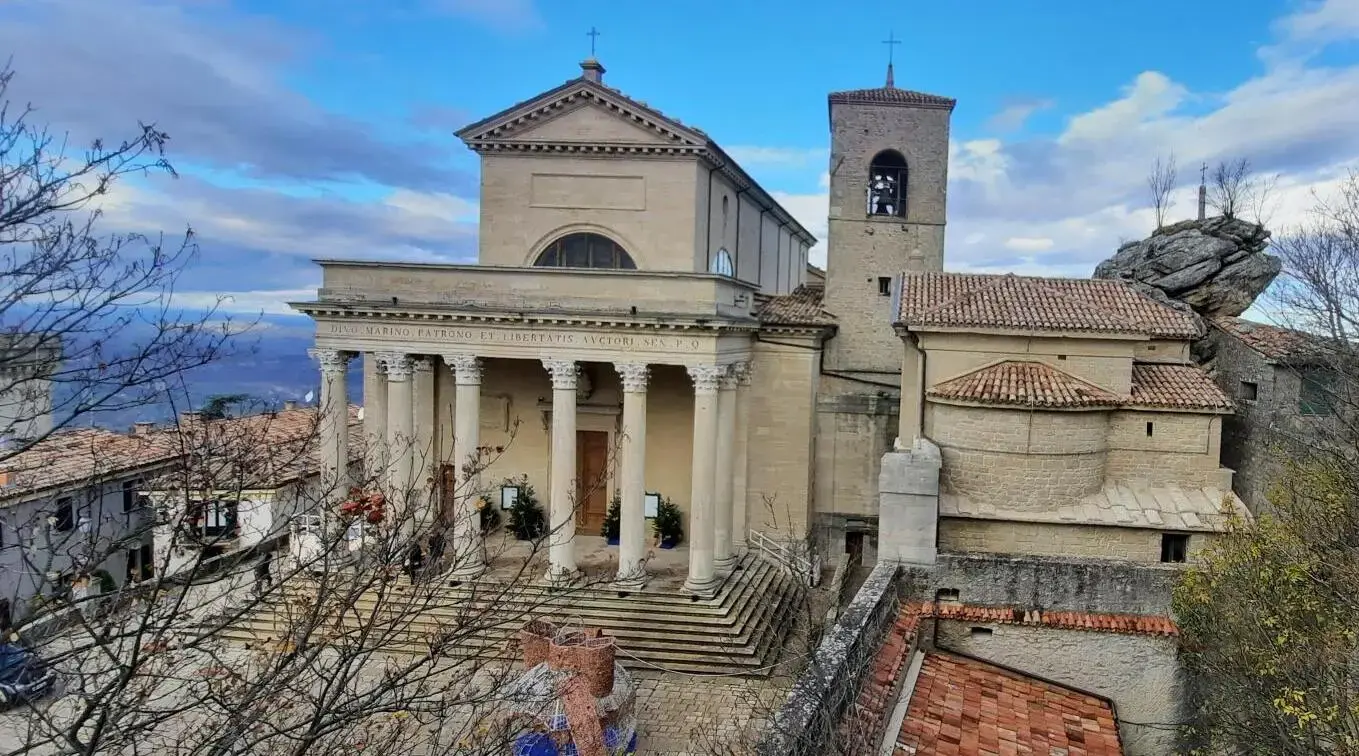
It has seven altars, the Main Altar housing the Statue of Saint Marino; to its left is the throne of the captains regent, under the altar is a small urn containing parts of Saint Marino's relics, with the majority of the relics sent to Dalmatia, where the Saint was born.
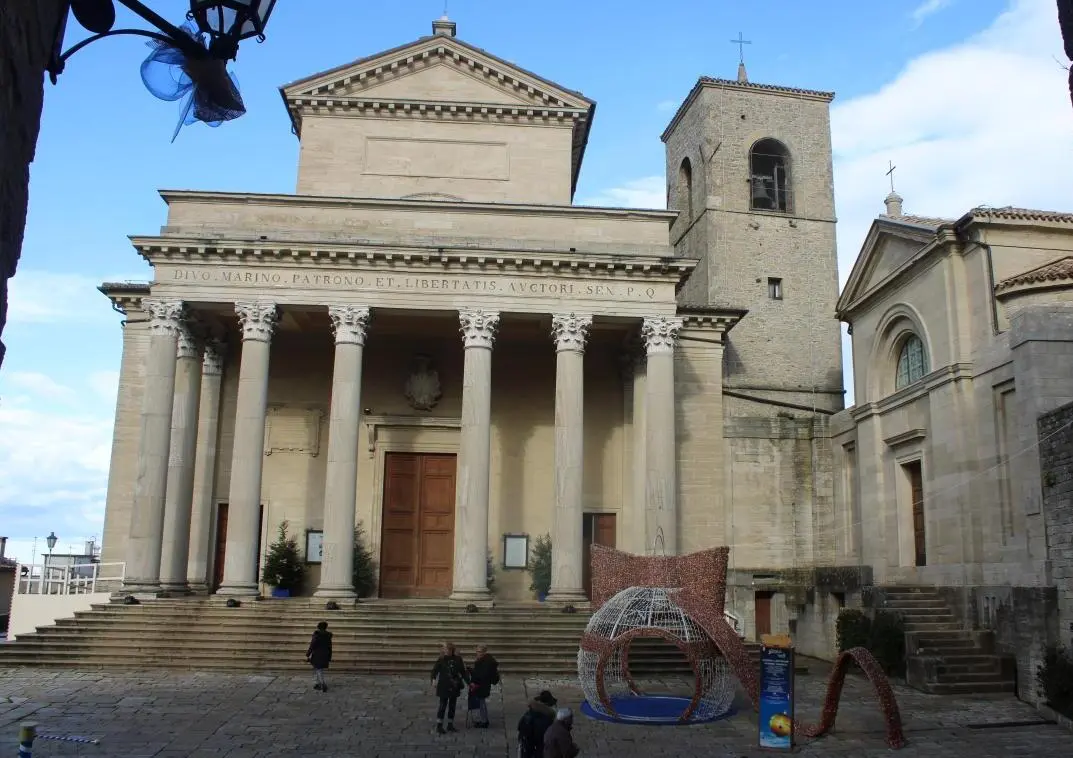
To the right, in a marble monument, is the Sacra Teca (Holy Reliquary), a gold and silver bust reliquary containing the Saint's skull.
A massive romanesque tower houses the Church's Bell Tower, next to it is built the Basilica of Saint Crypts or Chiesetta di San Pietro, in whose apse two niches are carved, which, according to popular tradition, are the beds of Saints Marino and Leo and have healing properties, and beneath the church is a Crypt where the Urn in which the Saint's bones rested for many centuries is located.
We wandered around San Marino for about 7 hours, enough time to see the most important tourist attractions in the city, the winding streets very close to each other, with passages between them, with stairs, a labyrinth that climbs towards the peak of Mount Titano.
The area of the towers situated on the edges of cliffs is very spectacular, with exceptional photos; the weather also helped, as we had sunshine that day. I really liked the Old City of San Marino.
Walking along its alleys and narrow streets, through its tiny squares, visiting its small shops, strolling by its walls and towers, I was transported into a wonderful fairy tale world.
Thank you for reading and make sure to subscribe. We're constantly exploring new destinations and share our stories, tips, and the beauty we discover along the way.

